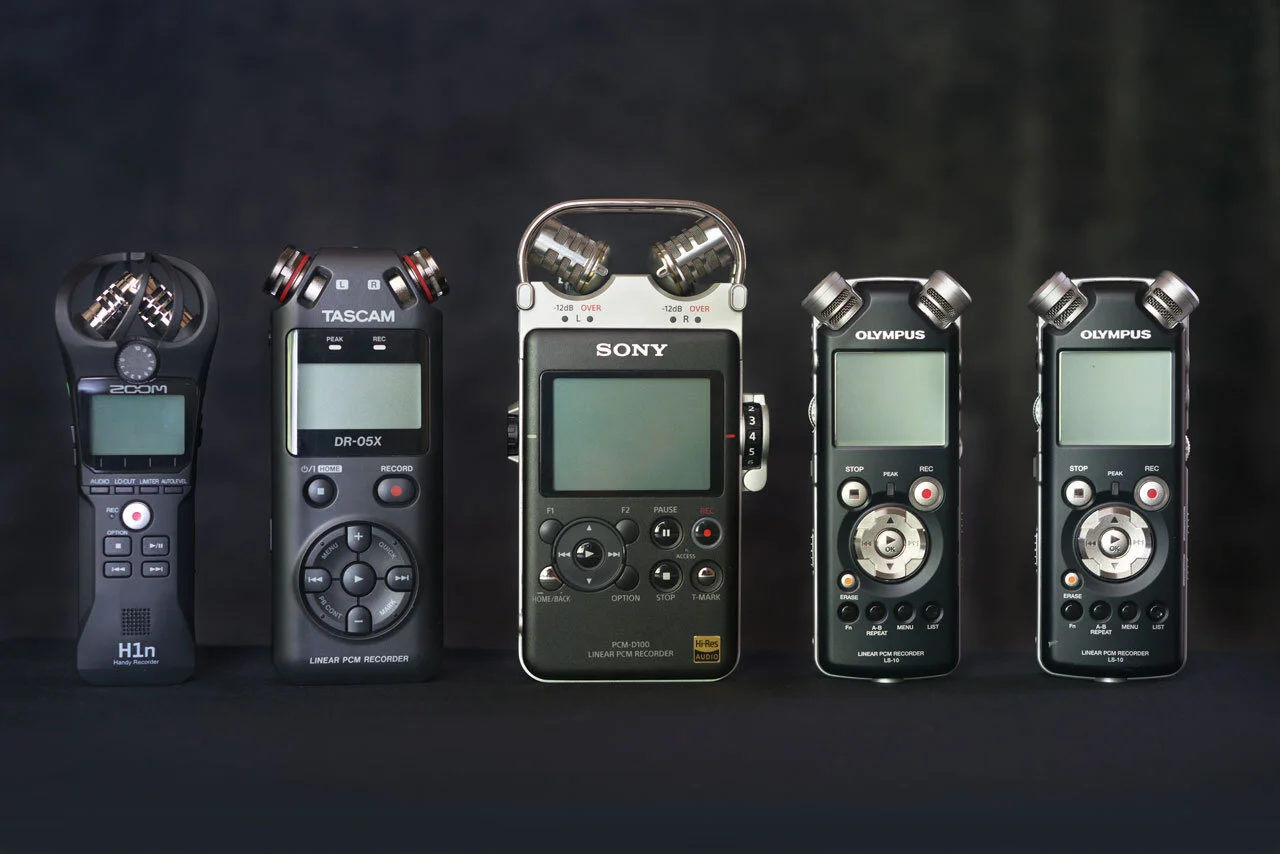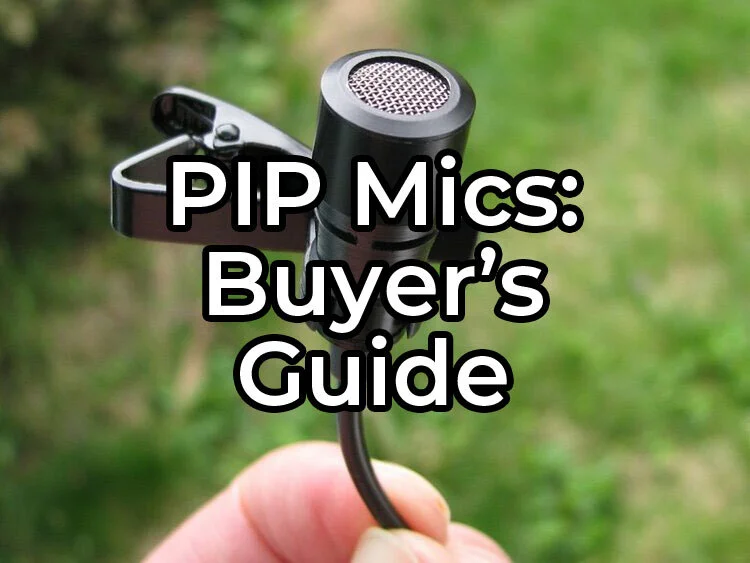Best Handheld Field Recorder for Nature Sounds (Self-Noise and Price)
Discover the quietest handheld field recorders on the market in 2021!
My motivation for getting started in field recording was natural sounds. I wanted to bring the sounds of nature to my home so I could always listen to them. To do this, I needed to know what the best recorder for the job would be.
This article is a presentation of my research on my quest to find the best field recorder for nature sounds. By reading, you will learn about field recorder self-noise and how to select the quietest recorder for your needs/budget.
Links on this page are affiliated with Sovrn and Amazon Associates networks.
Nature Sounds are Quiet
Recording the sounds of nature will push your gear to its limits. That’s because natural sounds are not well suited for low-noise recordings. They are quiet, detailed and tend to run away from people.
Have you ever recorded a quiet ambiance, but when you listen to the recording you hear an ever-present hissing sound? No, this is not the wind, this is the noise of your recorder (self-noise).
In the example above, the quiet ambiance is your signal, the intentional subject of the recording. The unintentional, background hiss is the noise. The comparison between signal loudness and noise loudness is called the signal-to-noise ratio (SNR).
This background noise is undesirable for two reasons. First, it distracts from your main subject (signal) and, if loud enough, can overpower your signal entirely. Second, it records information not truly present.
To me, reproducing the sounds of nature as we actually hear them is very important. The presence of electronic noise distorts and pollutes the natural sound.
To prevent the noise from becoming a distraction, we need to maximize our SNR.
RELATED: How To Find Quiet Nature Near You
How to Maximize SNR
We can increase the SNR in two ways. Either by increasing the volume of the signal, or by decreasing the volume of the noise.
Increase Signal Strength
Signal strength can be increased by getting closer to your subject or by using a shotgun or parabolic microphone to bring your subject closer to you. The less distance between you and your signal, the louder it will be.
You may think that increasing your gain will increase signal strength and thus, your SNR. While this will make your signal louder, increasing the gain also increases the noise from your recorder, leaving you no better off than before.
Decrease Noise Floor
The second way to maximize SNR is by decreasing the noise. The best way to do this is by opting for a low-noise recorder.
Not all field recorders are created equal. Some are more noisy than others. Some companies spend lots of money designing low-noise circuits inside their recorders. This expense is reflected in the price of low-noise recorders. Because of this, you tend to get what you pay for, although there are some exceptions.
For the highest quality recordings, you’ll want to get the lowest noise recorder you can afford.
Choosing a Field Recorder
While there are certainly many factors and specifications behind every field recorder, we can greatly simplify our research to focus on one variable: field recorder self-noise. This factor will make the largest audible difference between recorders when dealing with quiet nature sounds.
When I tried researching this, I was discouraged to learn two things. First, not all manufacturers disclose the self-noise level of their recorders. And second, if this specification is provided, the units vary.
Self-noise can be measured as SNR, equivalent input noise, or just as self-noise. These varying methods make it impossible to compare different recorders. I tried researching how to convert from one measurement to another but could not find anything with confidence.
Thankfully, during my continued research, I found the holy grail.
Avisoft Bioacoustics is a company who makes highly specialized software for processing wildlife audio. They also happen to test field recorder self-noise levels through controlled testing, AND they have a table of their results ranking recorders from most quiet to loudest! Check it out here.
As it turns out, this is quite a popular resource in the field recording community. Having a list of the lowest self-noise recorders available is priceless.
I have used this resource to determine the best handheld field recorders for nature sounds. My top three recommendations fall under the categories: Best Overall, Best Budget and Best Features. See them below!
Best Overall: Sony PCM D-100
The Sony D-100 is the king of all handheld field recorders. On Avisoft’s list, it is only 3dBu louder than the professional Sound Devices 722 recorder at -127 dBu!
Besides being the quietest handheld on the market, the D100 also features swiveling mics that can be arranged in 90° XY or 120° wide stereo positions, 196kHz/24-bit recording capabilities, and includes a nice case, wind protection and a remote control.
This is my primary field recorder. It has produced amazing audio for me and has survived outdoor conditions including freezing temperatures and high humidity with no problem.
Update: Unfortunately, Sony has discontinued the PCM D100 as of March, 2021. Ebay is now your best bet for purchasing one. Click the link button below to see if any are currently available. Amazon also gets a few units in stock from time to time.
Best Budget: Zoom H1n
The Zoom H1n is not on the Avisoft list so I do not have a specific noise value for it. However, I personally own one and estimate it to be -116 dBu.
At this price and quietness, it has no direct competitor that is still in production.
To hear how good the H1n sounds recording quiet nature sounds, click here.
The H1n is easy for the beginner to use and produces high-quality audio for more professional projects.
Click here to read my full review on my H1n.
Best Features: Zoom H5
Coming in at -121 dBu, the Zoom H5 is the second quietest handheld. It is significantly more affordable than the Sony D100, making it a popular option.
Besides its quietness and price point, the H5 also has 2 XLR/TRS phantom powered inputs.
Additionally, the onboard mics are detachable and interchangeable. Currently, Zoom offers 6 mic capsule options including shotgun and mid side options.
Having XLR inputs and interchangeable mic capsules gives the Zoom H5 the most features on this list. These features will allow you to grow with the H5 without having to purchase a new recorder.
RELATED: Best Handheld Field Recorder
My Experience
All three of the above options are adequately quiet for recording all but the most silent nature ambiences. I personally own a Sony D100 and an older Olympus model (LS-10).
The D100 is amazing on its own. I have only encountered a handful of scenarios where its self-noise was apparent. These scenarios are when my ears even have a hard time hearing anything, usually right before the dawn chorus has started. For my full thoughts on the D100, please see my detailed review.
As for my Olympus LS-10, it’s great for most nature sounds on its own. When I pair it with low-noise, external microphones, it performs on par with the D100. This is my setup when I want to leave a recorder in the field (I can’t bring myself to leave my D100 out of my sight!).
I don’t have any direct experience with the Zoom H5, but if you know you want to upgrade to XLR microphones in the future, I think it’s your best option.
All three of the recorders in this article support plug-in-powered, external microphones if you are interested in a cheap way to upgrade sound quality and noise performance.
Support Acoustic Nature
If you enjoyed this post and would like to help support Acoustic Nature, please consider "buying me a coffee" or becoming a Patreon with the buttons below.
As a thank you for your support, Patreon supporters receive a copy of Field Recording For Beginners, exclusive access to the full Behind The Sounds video series, nature sound library downloads, and more.
If you are unable to support the site financially, please share this post with others, or leave a comment below letting me know you enjoyed this post! Both are free and help the website grow. Thank you ♫
Thanks for reading,
-Jared















